Magnetostrictive Micro Mirrors for an Optical Switch Matrix
Abstract
:1. Introduction
2. Design and Fabrication of the Magnetostrictive Optical Switch Matrix
2.1. Optical Switch Design
2.2. Fabrication Process for Magnetostrictive Mirror
3. Measurement and Characterization Results
4. Conclusions
Acknowledgments
References and Notes
- Tomic, M.C.; Elazar, J.M.; Djinovic, Z.V. Voltage measurement based on the electrostrictive effect with simultaneous temperature measurement using a 3 × 3 fiber-optic coupler and low coherence interferometric interrogation. Sens. Actuator A-Phys. 2004, 115, 462–469. [Google Scholar]
- Životský, O.; Postava, K.; Kraus, L.; Foldyna, M.; Pištora, J. Magnetic and magneto-optical properties of CoFeCrSiB amorphous ribbons. J. Magn. Magn. Mater. 2006, 304, e534–536. [Google Scholar]
- Sánchez, L.J.L.; Sánchez, V.C.F.; Santana, G.A. Hard magnetic properties of isotropic nanostructured Y0.5Pr0.5Co5 powders. J. Magn. Magn. Mater. 2005, 294, 226–231. [Google Scholar]
- Guoa, Y.Q.; Li, W.; Luo, J.; Feng, W.C.; Liang, J.K. Structure and magnetic characteristics of novel SmCo-based hard magnetic alloys. J. Magn. Magn. Mater. 2006, 303, e307–e370. [Google Scholar]
- Rizal, C.S. Study of magnetic anisotropy and magnetoresistance effects in ferromagnetic Co/Au multilayer films prepared by oblique incidence evaporation method. J. Magn. Magn. Mater. 2007, 310, e646–e648. [Google Scholar]
- Cho, C.; Lee, H.S.; Kim, C.B.; Beom, H.G. A Finite Element Analysis for Magnetostrictive Thin Film Structures and its Experimental Verification. Key Eng. Mater. 2006, 306-308, 1151–1156. [Google Scholar]
- Speliotis, A.; Kalogirou, O.; Vouroutzis, N.; Niarchos, D. Magnetostrictive properties of amorphous and nanocrystalline TbDyFe flms with Nb and Zr additives. J. Magn. Magn. Mater. 1998, 187, 17–22. [Google Scholar]
- Lee, H.S.; Cho, C.; Chang, S.P. Effect of SmFe and TbFe film thickness on magnetostrictions for MEMS devices. J. Mater. Sci. 2006, 42, 384–388. [Google Scholar]
- Body, C.; Reyne, G.; Meunier, G.; Quandt, E.; Seemann, K. Application of magnetostrictive thin films for microdevices. IEEE Trans. Magn. 1997, 33, 2163–2166. [Google Scholar]
- Thomas, P.; Nabighian, E.; Bartelt, M.C.; Fong, C.Y.; Zhu, X.D. An oblique-incidence optical reflectivity difference (OI-RD) and LEED study of rare gas growth on a lattice-mismatched metal substrate. Appl. Phys. 2004, A79, 131–137. [Google Scholar]
- McIntyre, J.D.E.; Aspnes, D.E. Differential reflection spectroscopy of very thin surface films. Surf. Sci. 1971, 24, 417–434. [Google Scholar]
- Wong, A.; Zhu, X.D. An optical differential reflectance study of adsorption and desorption of xenon and deuterium on Ni(111). Appl. Phys. 1996, A63, 1–8. [Google Scholar]
- Zhu, X.D. Oblique-incidence optical reflectivity difference from a rough film of crystalline material. Phys. Rev. 2004, B69, 115407-1–5. [Google Scholar]
- Sander, D. The correlation between mechanical stress and magnetic anisotropy in ultrathin films. Rep. Prog. Phys. 1999, 62, 809–858. [Google Scholar]
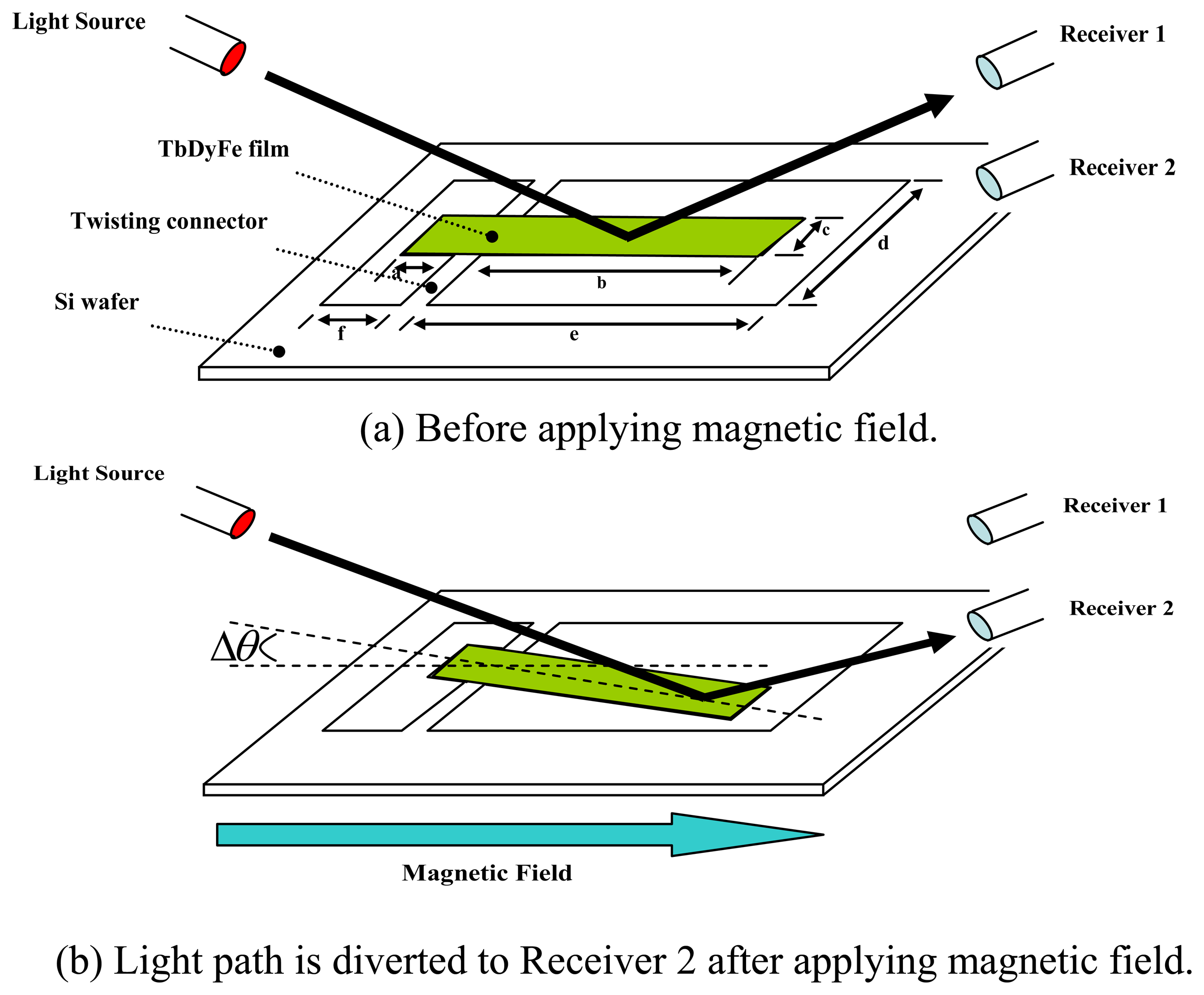

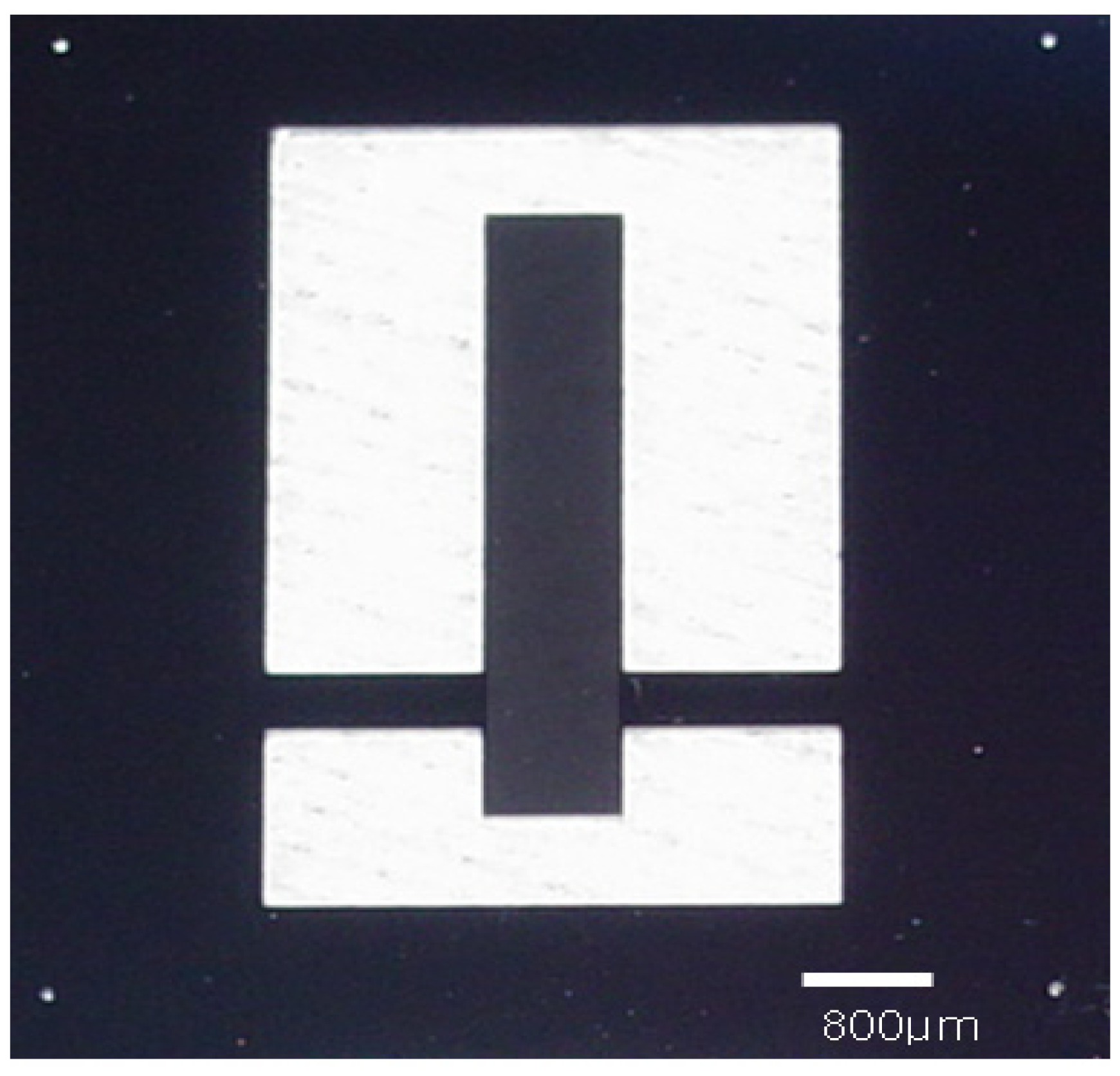
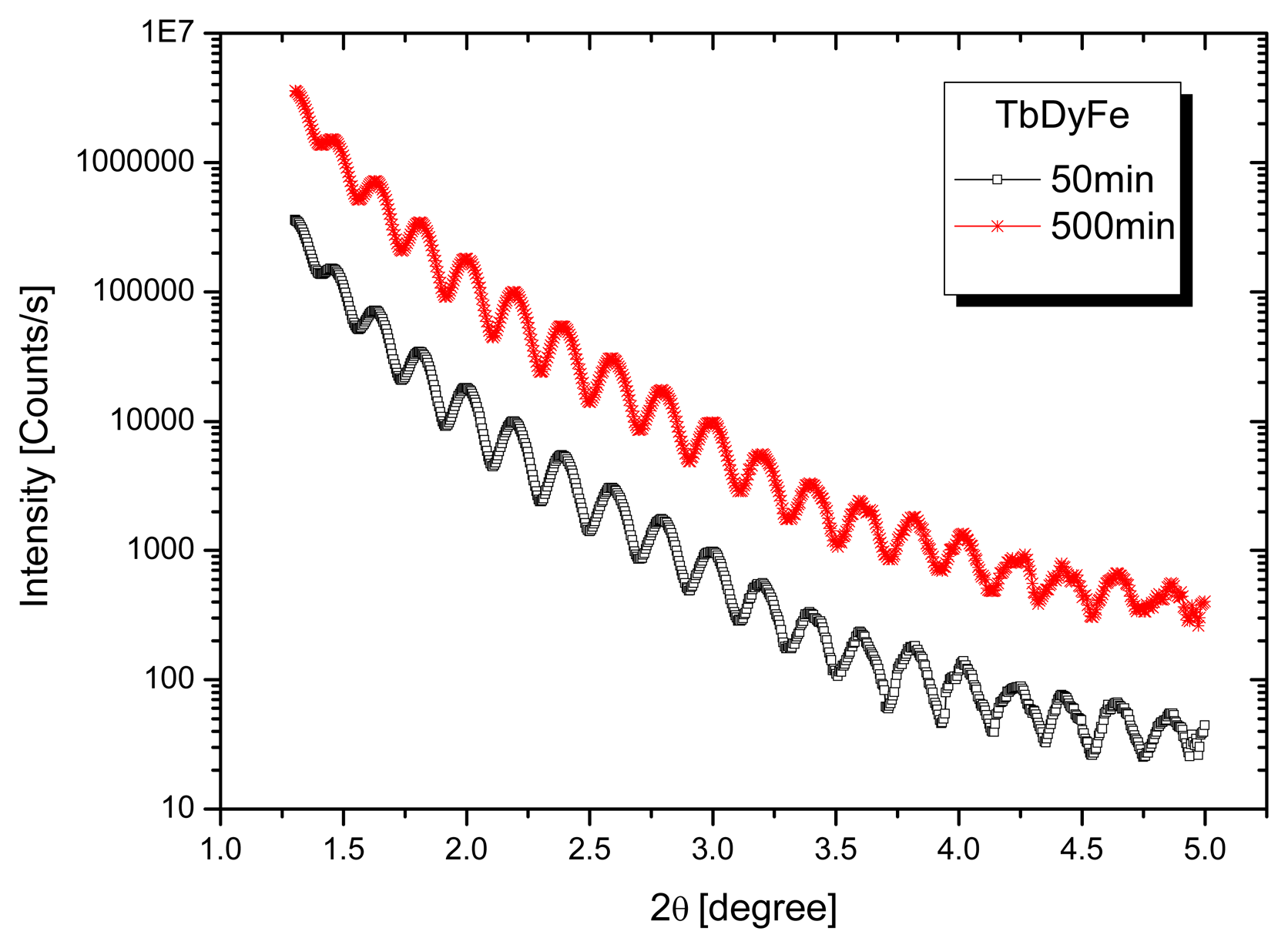
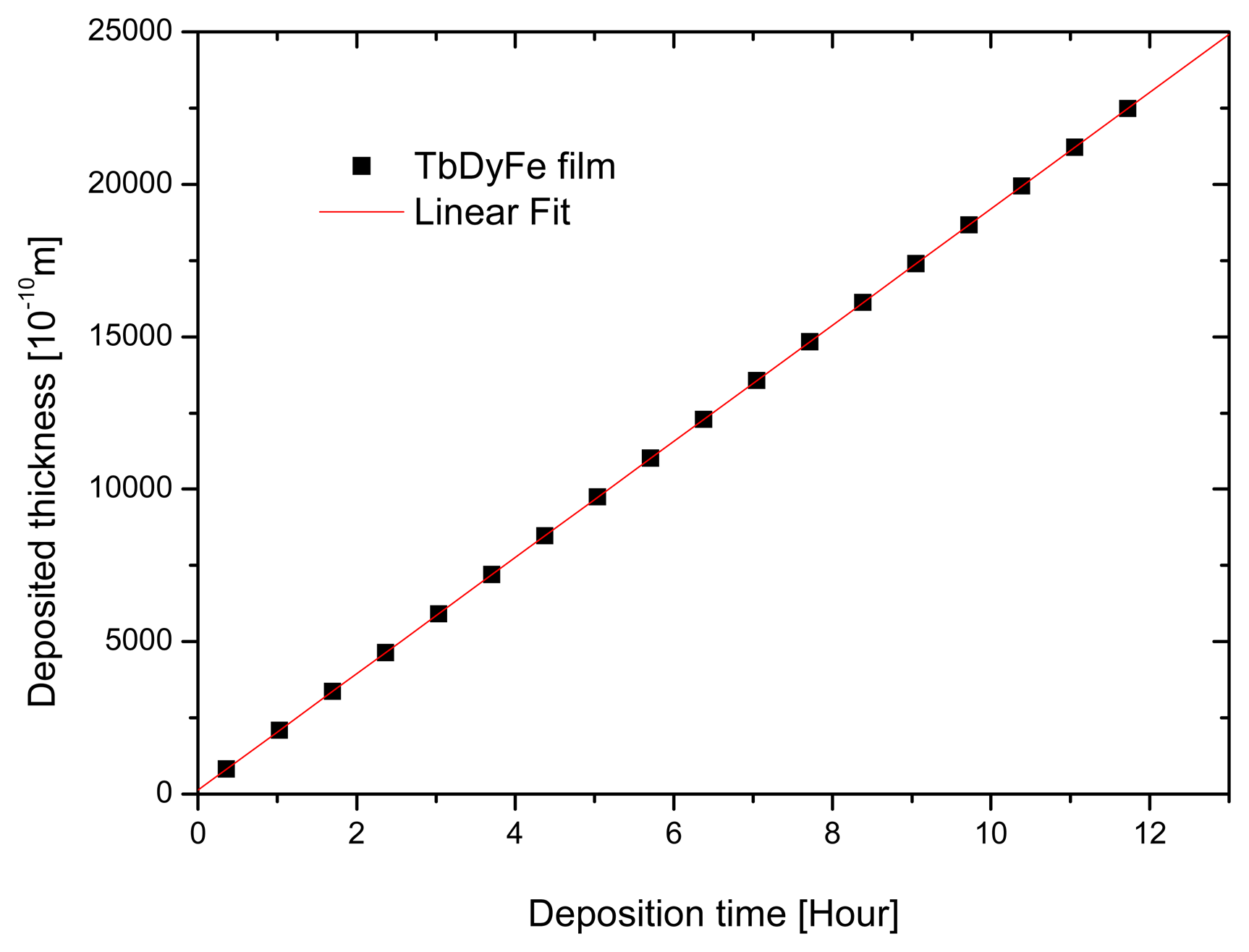
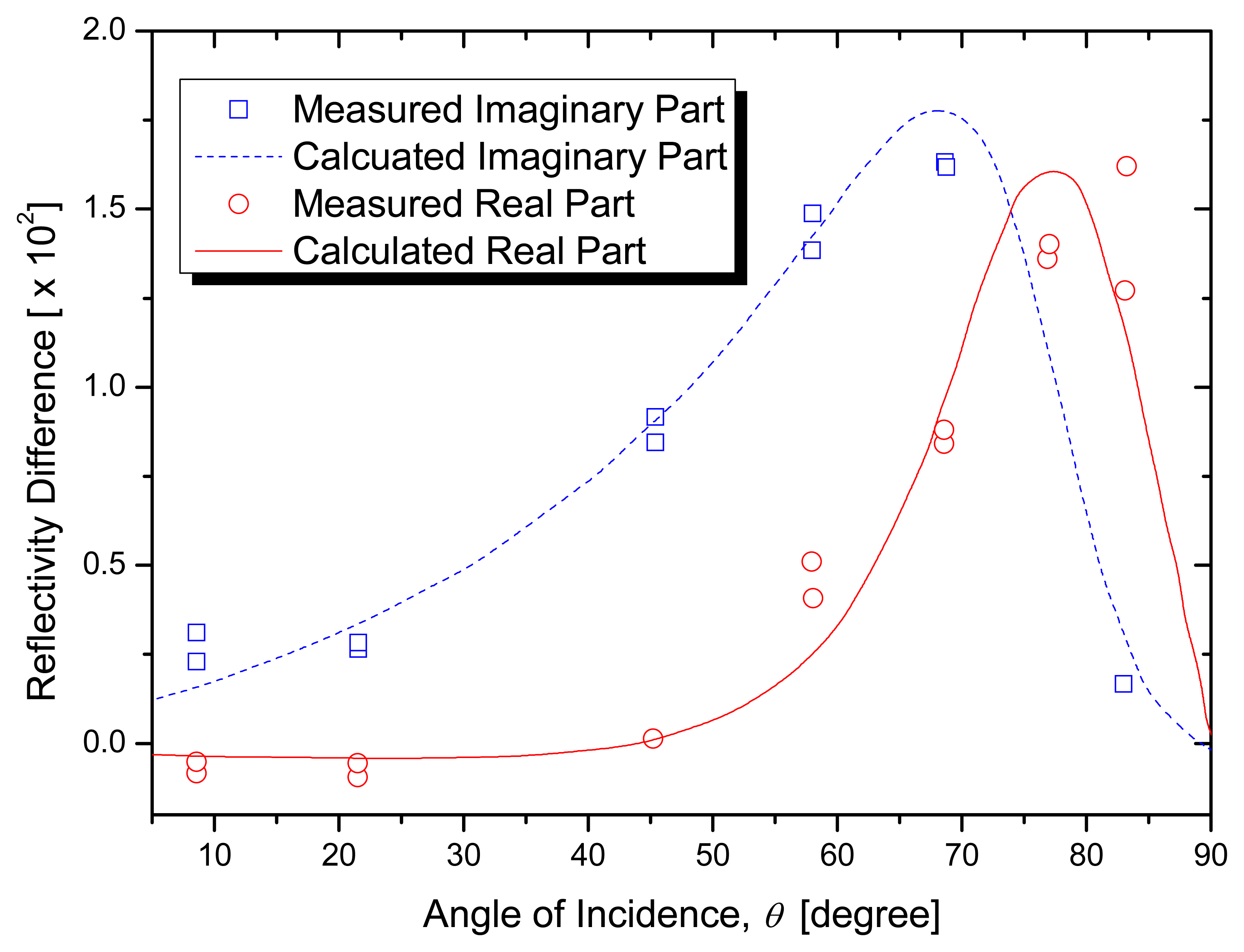
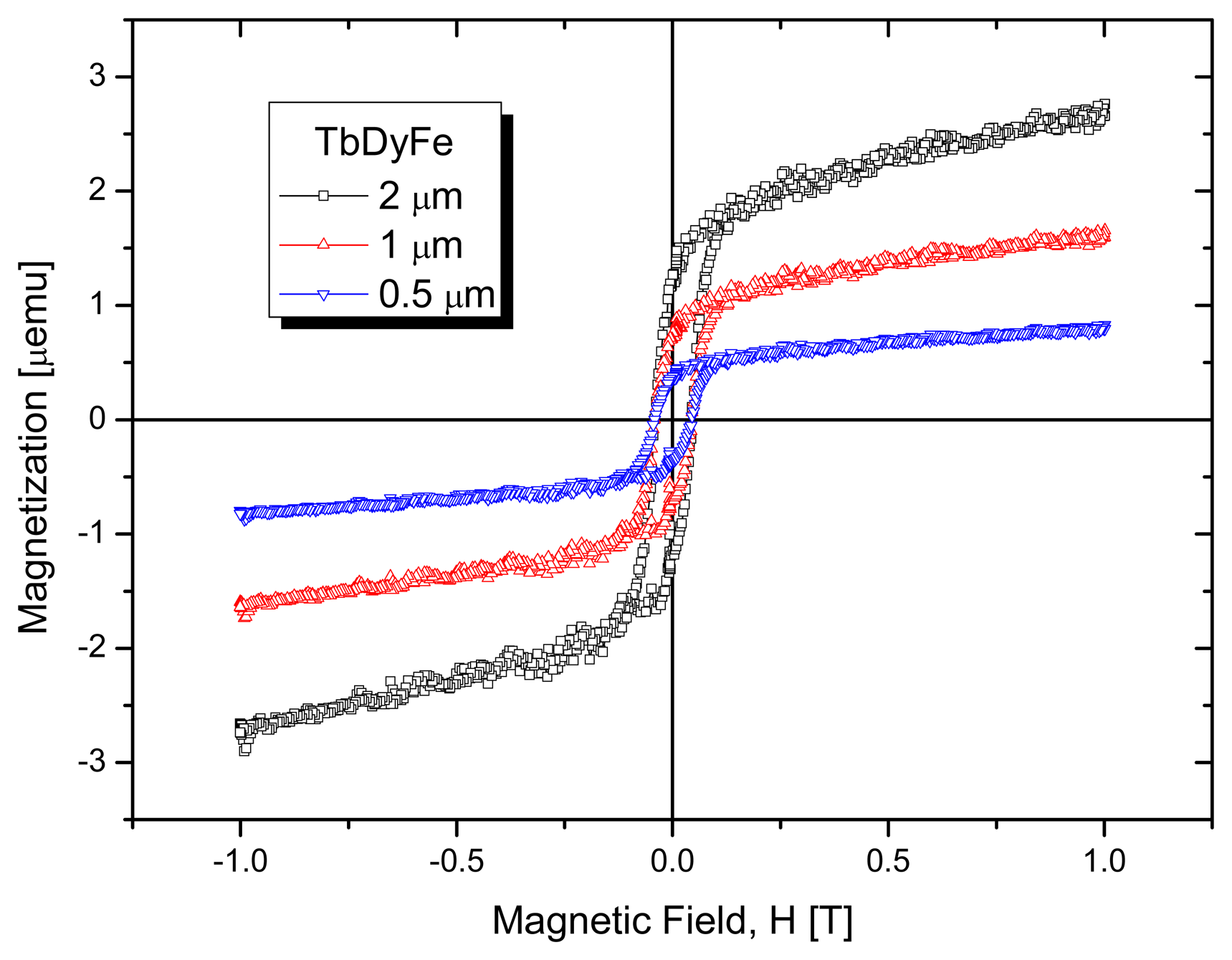
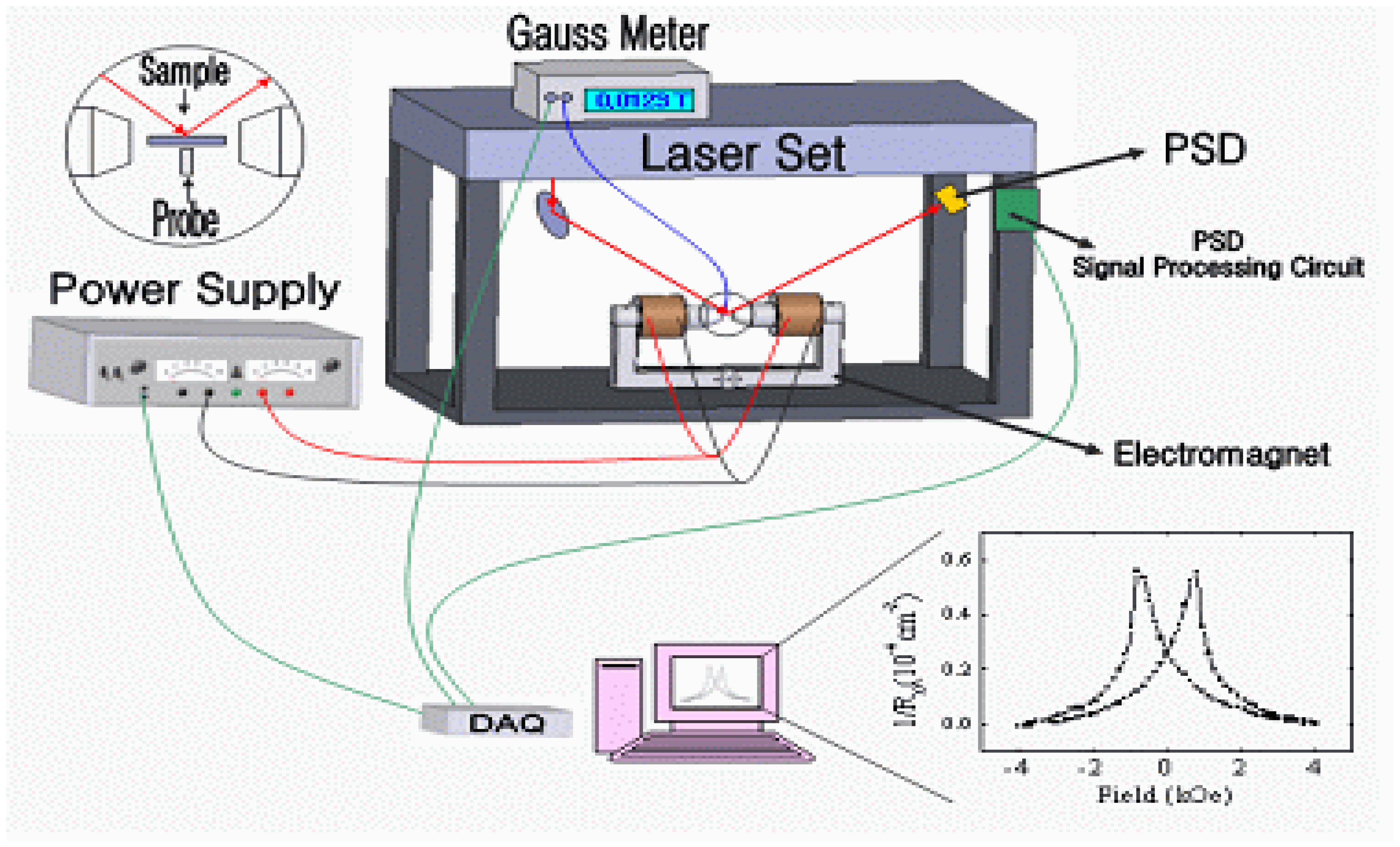
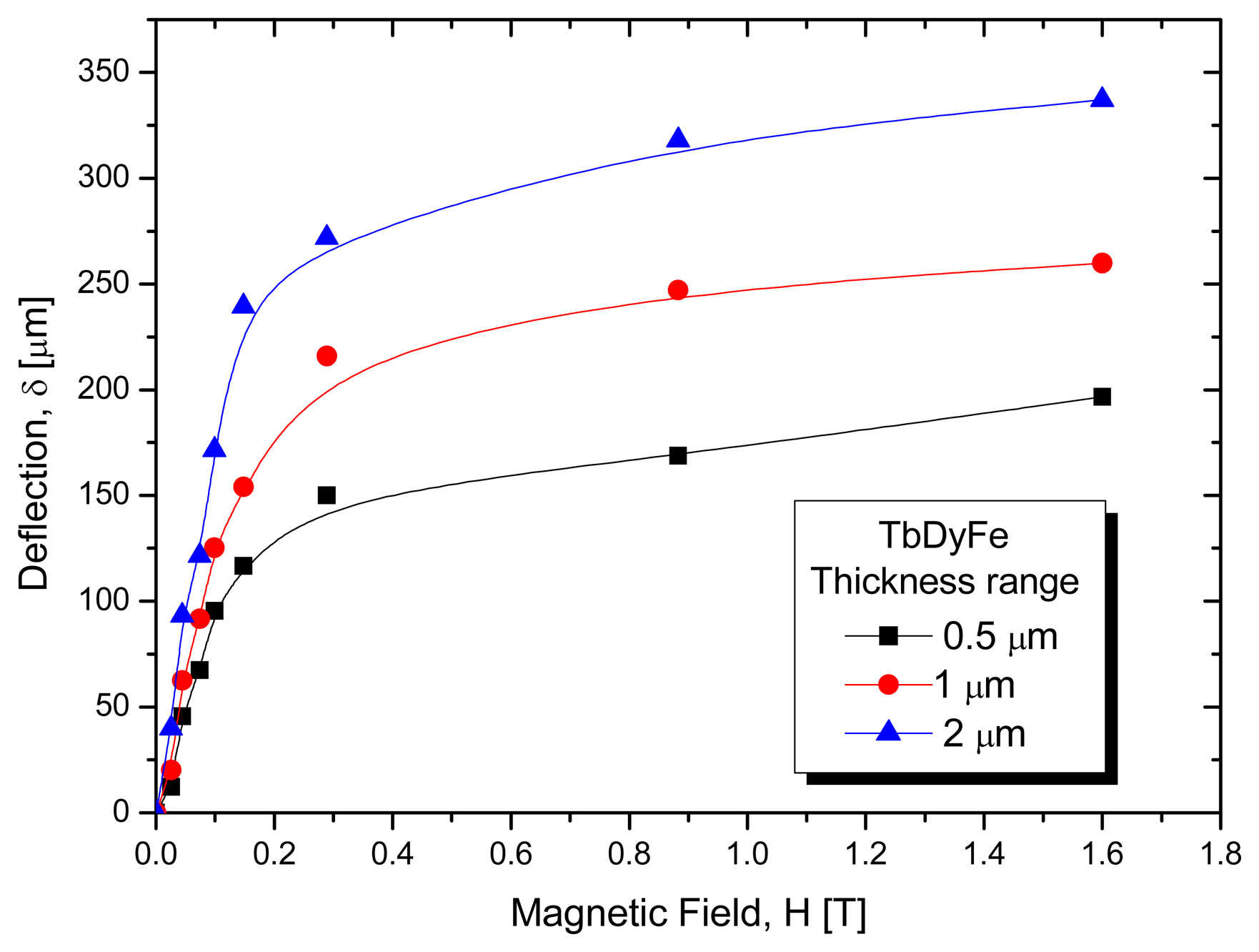
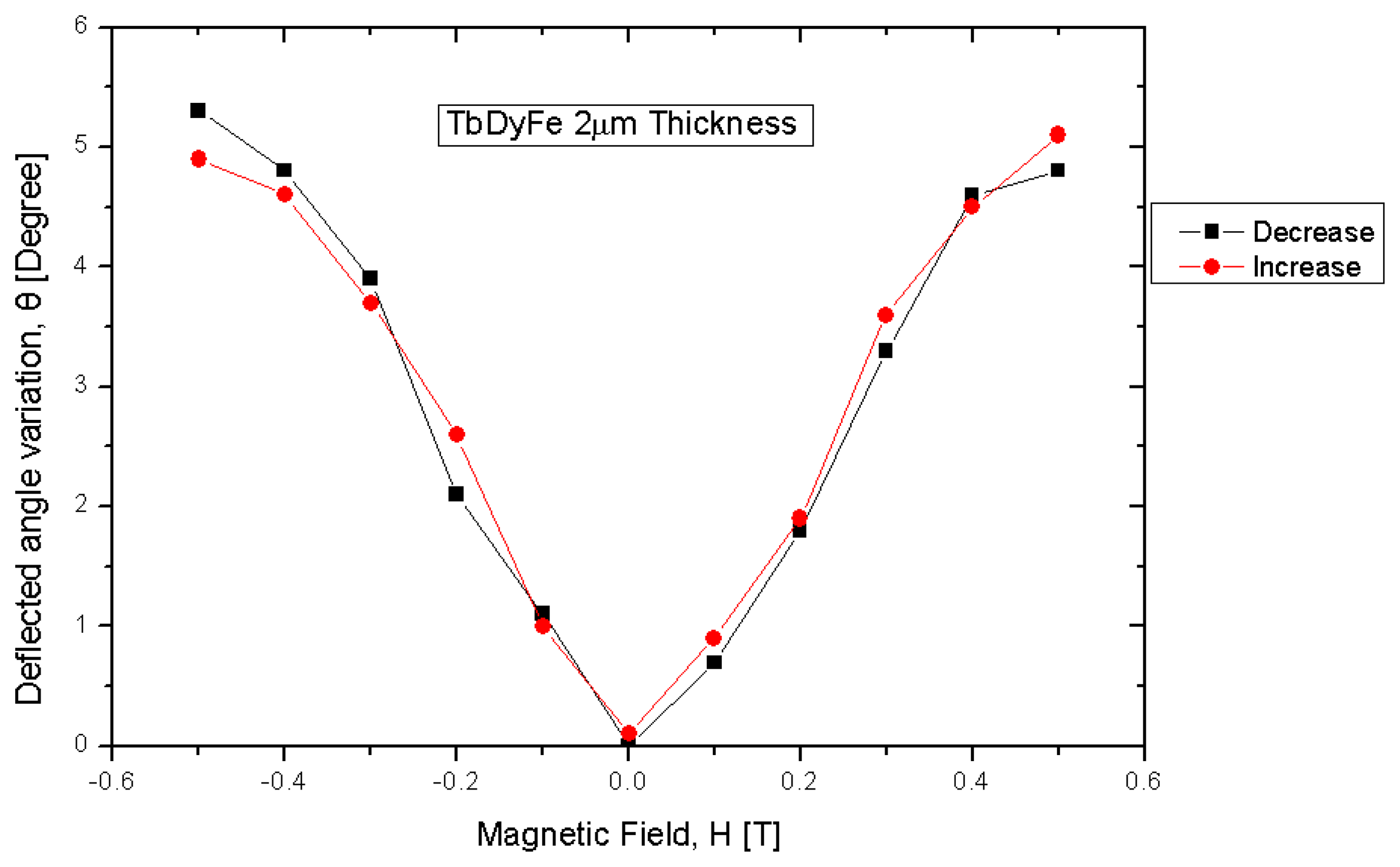
© 2007 by MDPI ( http://www.mdpi.org). Reproduction is permitted for noncommercial purposes.
Share and Cite
Lee, H.-S.; Cho, C.; Cho, M.-W. Magnetostrictive Micro Mirrors for an Optical Switch Matrix. Sensors 2007, 7, 2174-2182. https://doi.org/10.3390/s7102174
Lee H-S, Cho C, Cho M-W. Magnetostrictive Micro Mirrors for an Optical Switch Matrix. Sensors. 2007; 7(10):2174-2182. https://doi.org/10.3390/s7102174
Chicago/Turabian StyleLee, Heung-Shik, Chongdu Cho, and Myeong-Woo Cho. 2007. "Magnetostrictive Micro Mirrors for an Optical Switch Matrix" Sensors 7, no. 10: 2174-2182. https://doi.org/10.3390/s7102174
APA StyleLee, H.-S., Cho, C., & Cho, M.-W. (2007). Magnetostrictive Micro Mirrors for an Optical Switch Matrix. Sensors, 7(10), 2174-2182. https://doi.org/10.3390/s7102174



